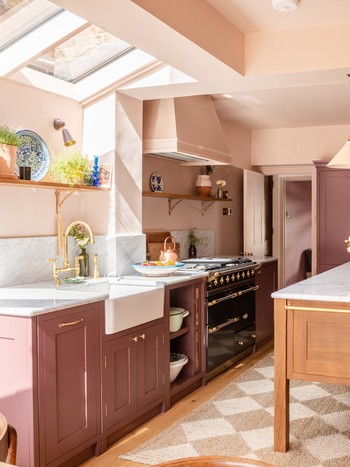Include Stability and Appeal with Sturdy Legs For Kitchen Island Setups
Include Stability and Appeal with Sturdy Legs For Kitchen Island Setups
Blog Article
An Overview to Choosing the Perfect Legs For Kitchen Island for Your Home
Choosing the ideal legs for your kitchen area island is a nuanced choice that impacts both the functionality and aesthetic charm of this central area. Elements such as height, materials, and design play a critical function in integrating your island with the overall cooking area design. In addition, comprehending the importance of security and upkeep can substantially affect your choice. As you consider these aspects, it comes to be obvious that the appropriate legs can change not only the look of your kitchen yet also its functionality for many years to find. What certain attributes should you prioritize in this option procedure?

Comprehending Kitchen Area Island Legs
When selecting legs for a cooking area island, it's vital to recognize their functional and visual functions in the overall layout. The legs work as a vital support group, making sure security and sturdiness for the island, which typically operates as a work area, dining location, or collecting place. The option of product and construction method have to be durable sufficient to endure everyday usage and possible wear.
In enhancement to their structural responsibilities, legs contribute considerably to the island's visual charm. They can improve the cooking area's design, whether through standard, contemporary, or eclectic layouts. The elevation and percentage of the legs are likewise vital considerations; they should balance with the island's kitchen counter elevation while guaranteeing comfortable seating for those making use of the room.
In addition, the leg style can affect the total flow of the kitchen area. Open, airy leg styles can develop a sense of lightness, while strong, substantial legs might share a much more grounded and stable aesthetic - Legs For Kitchen Island. Comprehending these practical and aesthetic aspects will certainly assist home owners in making notified selections that complement their cooking area's design and improve its use
Popular Styles and Materials
The selection of legs for a kitchen island includes a range of popular styles and products, each offering special characteristics that can boost both performance and looks. Amongst one of the most sought-after styles are modern, rustic, and traditional. Contemporary legs often include streamlined, minimal styles that highlight simplicity and clean lines, making them perfect for modern kitchen areas. Rustic designs, on the various other hand, accept natural environments and usually display redeemed timber or troubled surfaces, including heat and appeal to the area. Typical legs commonly show luxuriant information and workmanship, enhancing timeless kitchen area designs.

Elevation and Security Considerations

Security is an additional crucial factor to consider. The legs of the kitchen island should supply appropriate support, making sure that the structure can endure daily use without changing or wobbling. Product choice plays a significant duty in stability; steel legs, for example, tend to supply higher strength contrasted to wood. Furthermore, guaranteeing that the island is firmly anchored to the flooring or wall can boost stability, specifically for larger islands that might bear considerable weight.
Matching Your Kitchen Aesthetic
Picking the right legs for your cooking area island exceeds performance; it also plays a considerable role in the general visual of the area. When choosing legs, take into consideration the layout style of your kitchen. For a modern appearance, streamlined metal or minimalist designs can create a clean, modern-day ambiance. On the various other hand, typical or rustic kitchens frequently take advantage of wooden legs with elaborate outlining or a troubled coating, boosting heat and personality.
Shade is one more important aspect. Legs that match or comparison with your island's surface and surrounding cabinetry can create visual consistency or striking focal factors. Matching dark wood legs with a light marble countertop can include deepness and interest. Furthermore, consider the surface of the legs; matte, glossy, or textured coatings can dramatically influence the general feel of the kitchen.
Installation and Upkeep Tips
Mounting kitchen area island legs calls for careful interest to information to guarantee both security and aesthetic charm. Utilize a stud finder to situate wall surface studs if you are attaching the legs to a wall surface or using braces for included support.
When protecting the legs, make use of premium screws and, if essential, wood glue for added toughness. For metal legs, make sure that you are making use of appropriate anchors and devices to protect against damage to your flooring. It is suggested to look for levelness after installation, making modifications as required to stay clear of wobbling.
Tidy the legs with an ideal cleaner, staying clear of unpleasant products that might scrape the surface. By following these installation and maintenance pointers, you can make certain that your cooking area island legs continue to be both practical and visually try these out attractive.
Verdict
Finally, picking the proper legs for a kitchen area island requires careful consideration of elevation, security, and aesthetic compatibility. By choosing ideal materials and styles that straighten with the general kitchen area design, functionality can be enhanced while keeping aesthetic appeal. Correct setup and ongoing upkeep additionally add to the sturdiness and longevity of the cooking area island. Ultimately, thoughtful leg option plays a critical function in elevating both the functionality and design of the cooking area area.
When choosing legs for a cooking area island, it's necessary to understand their practical and visual duties in the overall style. Open, airy leg styles can produce a sense of lightness, while strong, substantial legs may communicate an extra grounded and check this steady visual. The legs of the kitchen island ought to give sufficient assistance, making certain that the structure can stand up to day-to-day use without changing or tottering.Installing kitchen area island legs needs mindful attention to detail to guarantee both security and visual allure.In verdict, selecting the suitable legs for a kitchen area island demands mindful consideration of height, stability, and aesthetic compatibility.
Report this page